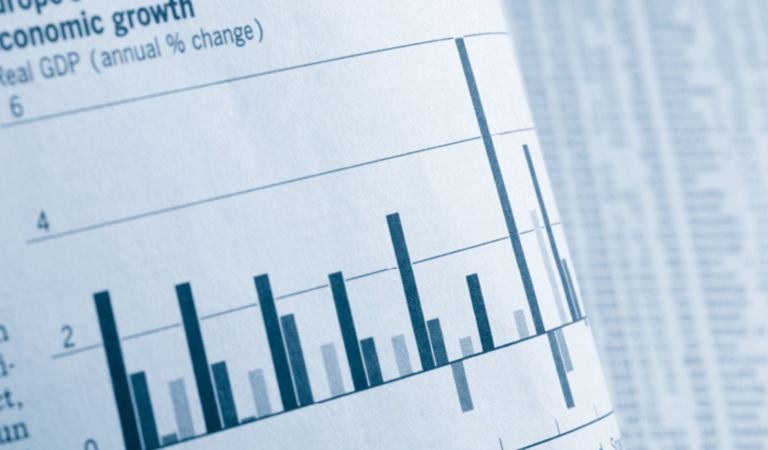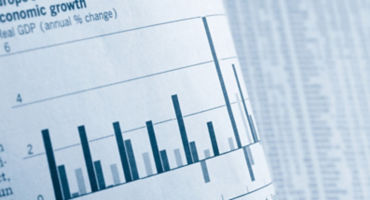Global equities (+9.6%) soared in the first quarter. The MSCI ACWI Index surged to record highs amid robust earnings from mega-cap technology companies, an improved economic outlook, and swelling enthusiasm for AI. Global economic growth gained momentum and bolstered hopes of a “soft landing” as the J.P.Morgan Global Composite Purchasing Managers’ Index (PMI) accelerated to an eight-month high. Dissipating headline inflation across developed markets helped to set the stage for policy normalization, although tight labor markets, higher commodity prices, resilient economic growth, and persistent services inflation reinforced caution among officials at the US Federal Reserve (Fed) and the European Central Bank (ECB) as they prepare to loosen monetary policy. In a notable development, the Bank of Japan (BOJ) increased interest rates for the first time since 2007. This decision came as the Japanese yen fell to a 30-year low, wage growth exceeded expectations, and weaker economic growth pushed the country to the brink of recession. The UK’s economy expanded in January following a recession in the second half of 2023. Persistent weakness in manufacturing continued to hinder Germany’s economy, while peripheral European economies such as Spain and Italy benefited from domestic consumer-led growth and greater access to cheaper energy. China’s economy showed improvements in March amid better industrial production and retail sales, while officials announced a GDP target of 5% for 2024, signaling a commitment to continued policy support in the face of local government financial fragility and a struggling property sector.
Global fixed income markets generated negative total returns during the first quarter, as measured by the Bloomberg Global Aggregate Index. Stronger-than-expected economic data, along with persistent inflation pressures, pushed out the expected timing of central bank rate cuts. Resilient consumer spending and strong corporate earnings helped propel further spread tightening across most fixed income sectors. Most currencies depreciated versus the US dollar.
Commodities (+10.4%) rallied in the first quarter as all four sectors (energy, industrial metals, precious metals, agriculture & livestock) generated positive returns.
Equities
United States
US equities (+10.6%) surged to record highs during the quarter as stocks extended their robust performance from 2023. While mega-cap stocks outperformed the rest of the market in aggregate, there was more breadth in the rally, fueled by better-than-expected fourth-quarter earnings and an encouraging economic outlook. Earnings for companies in the S&P 500 Index rose approximately 4.0% year over year in the fourth quarter, well above an estimate of 1.5% at the end of 2023. Financial markets recalibrated for fewer interest-rate cuts by the Fed amid some areas of persistent inflation and sustained strength in the economy, highlighted by 3.2% annualized GDP growth in the fourth quarter and a resilient labor market that supported consumer spending. Inflation remained well above the Fed’s 2.0% target, although the disinflation trend appeared intact; the core Personal Consumption Expenditures Price Index increased 2.8% in February compared to a year earlier, in line with forecasts. Interest rates were unchanged during the quarter, with a narrow majority of Fed officials projecting three interest-rate cuts in 2024 despite firmer-than-anticipated inflation in recent months. In March, the Fed’s quarterly economic projections revealed expectations for economic growth of 2.1% in 2024, a significant increase from the bank’s December forecast of 1.4%. The Fed also foresees unemployment rising to 4.0% and inflation declining at a slower (2.6%) pace by the end of 2024.
Economic data released during the quarter was mixed but indicated that the US economy remained healthy against a backdrop of a resilient labor market and sustained consumer spending. Nonfarm payrolls continued to advance at a hefty pace and initial jobless claims held at a historically low level. Other measures signaled a gradual cooling in the labor market, including slower growth in wages and hiring and a rise in the unemployment rate to a two-year high of 3.9%. Consumers broadly curbed outlays on goods and services in January, although spending rebounded in February as retail sales and personal spending grew at a brisk monthly pace of 0.6% and 0.8%, respectively. The Conference Board’s Consumer Confidence Index dipped from 110.9 in January to 104.7 in March, mostly driven by a less optimistic outlook for business conditions, incomes, and the labor market. Small-business sentiment remained historically depressed, with the National Federation of Independent Businesses Small Business Optimism Index slipping to 89.4 in February, well below its 50-year average of 98. The housing market offered signs of a recovery; in February, building permits and housing starts rose significantly after weather-related constraints in January, and existing-home sales increased at the fastest pace in a year as the number of listings grew. Homebuilder sentiment climbed to an eight-month high in March amid solid demand, which put upward pressure on home prices. The manufacturing sector expanded in March after 16 straight months of contraction, while the services sector continued to expand at a moderate pace during the quarter.
Within the S&P 500 Index (+10.6%), 10 of the 11 sectors posted positive results for the quarter. Communication services (+15.8%) was the best performing sector, led by entertainment (+22.0%). Energy (+13.7%) outperformed, as oil, gas, & consumable fuels (+14.6%) contributed to the sector. Information technology (+12.7%) also outperformed, led by semiconductors & semiconductor equipment (+39.5%). Real estate (-0.6%) was the worst performing sector. Consumer discretionary (+5.0%) and utilities (+4.6%) also underperformed the index.
Europe
European equities (+8.4%) advanced in the first quarter. In February, the European Commission (EC) downgraded its eurozone economic growth forecast for 2024 to 0.8%, from its previous estimate of 1.2%, as high interest rates and geopolitical tensions continued to weigh on economic activity. However, economic growth is expected to accelerate gradually this year amid a faster-than-expected decline in inflation. In March, the HCOB Flash Eurozone Composite PMI increased for the fifth straight month to a nine-month high of 49.9, slightly below an expansionary level, indicating a very modest decline in the output of goods and services. Against a backdrop of ebbing inflation and improving, albeit lackluster, economic growth, the ECB and the central banks of Norway, Sweden, and the UK left interest rates unchanged and signaled that rates would be cut in the coming months, while the central bank of Switzerland unexpectedly became the first major central bank to ease policy. Eurozone headline inflation moderated to 2.4% in March, from 2.9% in December, while core inflation fell more than expected to 2.9%, from 3.4%, bolstering expectations that the ECB will cut interest rates by the summer. In March, the ECB announced a new operational framework, outlining plans to augment commercial bank lending and shrink its vast bond portfolio. Fourth-quarter earnings for companies in the STOXX 600 Index are forecast to decline by 6.5% from a year earlier.
Europe’s manufacturing sector stabilized over the quarter; the HCOB Eurozone Manufacturing PMI increased to 46.1 in March, up from 44.4 in December. Output and new orders contracted at the slowest rate in a year and remained on an upward trajectory, while factories shed jobs for the tenth successive month. Encouragingly, business confidence rose to an 11-month high, and input costs and output prices continued to fall. Manufacturing broadly improved in the region, with the exception of Germany, where activity deteriorated at the sharpest pace in five months. The HCOB Flash Eurozone Composite PMI revealed that services sector activity improved in March for the second straight month. New business rose for the first time in nine months, while costs rose at the softest pace for eight months. The EC’s Economic Sentiment Indicator recorded a three-month high of 96.3 in March; consumer confidence continued its recovery thanks to a better view of the economic situation, while industry confidence improved marginally.
In Germany (+9.6%), a combined report from the top five economic institutes forecast GDP growth of 0.1% in 2024, a steep downgrade from a previous projection of 1.3% amid declining exports and faltering domestic demand. Although the ZEW Indicator of Economic Sentiment in March reached its highest level since February 2022, the assessment of the current economic situation remained at a low level. The UK (+4.1%) economy returned to growth in January, with GDP rising 0.2%, driven by an expansion in the services sector. The S&P Global Flash UK PMI Composite Output Index dropped fractionally to 52.9 as manufacturing hit a 20-month high, while services dipped but remained in expansionary territory. Headline inflation fell more than forecast to 3.4% in February, strengthening the case for lower interest rates in the summer. Italy’s (+16.5%) economy expanded by 0.2% in the fourth quarter, supported by stronger output in manufacturing and services, while Spain’s (+10.8%) economy accelerated faster than expected with quarterly growth of 0.6%, thanks to rising domestic demand.
Pacific Basin
Pacific Basin equities (+13.3%) ended the quarter higher. In Japan (+19.3%), the BOJ eliminated its negative interest-rate policy by raising borrowing costs for the first time since 2007, a move that marks a historic shift in the central bank’s aggressive monetary stimulus. The bank lifted the overnight borrowing rate to a range of 0% – 0.1%, from -0.1%. It also ended its yield curve control program and exchange-traded-fund purchase program, while pledging to continue buying long-term government bonds as needed to support the transition. BOJ Governor Kazuo Ueda stated that the central bank has “judged that achieving the goal of sustainable 2% inflation has come within view.” The decision followed stronger-than-expected wage increases by Japan’s largest companies, which policymakers hope will boost household spending and generate more durable growth in the economy. The country’s largest union announced that its members reported raises averaging 5.3%, well above the 3.8% wage increases last year. Although the core Consumer Price Index (CPI) accelerated in February, another inflation measure that strips out the effect of fuel and that’s closely monitored by the BOJ eased to 3.2%, from 3.5%, marking the slowest annual pace of price increases for more than a year and adding uncertainty about how soon the BOJ would raise interest rates again. The yen slid to a 34-year low against the US dollar, prompting Japan’s finance minister to reiterate his commitment to intervene in the currency markets to prevent excessive fluctuations in the exchange rate. Japan avoided recession as fourth-quarter annualized GDP was revised higher to 0.4%, driven by robust business spending.
In Australia (+5.4%), CPI inflation in February rose at a 3.4% annual pace for a third straight month, but a closely watched measure of core inflation increased to 3.9%, from 3.8% in January, supporting the Reserve Bank of Australia’s (RBA’s) decision in March to keep interest rates unchanged at 4.35%. The RBA removed all references to additional rate increases, but Governor Michele Bullock noted that the bank is not confident enough to completely rule out future hikes. GDP slowed to 0.2% during the fourth quarter as higher interest rates and the rising cost of living curbed household spending. Excluding the pandemic period, the 1.5% annual pace of GDP growth was the lowest since 2000 and well below the 2.4% average over the last decade. The unemployment rate fell to 3.7% in February, from 4.1%, and the economy added 116,500 jobs, nearly three times the forecast gain. These unexpected results appeared to highlight resilience in the labor market but were also at odds with recent declines in job openings, an upward trend in the unemployment rate since October, and weak consumer spending. Nevertheless, markets dialed back expectations for an August rate cut. Retail sales in December slid by the most in 12 months and were well below expectations, suggesting that tighter monetary policy and elevated living costs restrained demand. However, sales rebounded 1.1% in January before easing to a 0.3% gain in February.
In Singapore (+2.2%), core inflation in February rose at the fastest pace in seven months, increasing 3.6% versus a forecast of 3.4%, driven by seasonally higher spending from the Lunar New Year. GDP in 2023 expanded at a modest 1.1% year-over-year pace as manufacturing activity contracted and services growth slowed. However, GDP accelerated to 2.2% year over year in the fourth quarter, lower than the government’s forecast of 2.8% but a sharp increase from 1.0% in the third quarter. Consensus projections for economic growth in 2024 were boosted to 2.5%, from 2.3%. New Zealand’s (+2.0%) GDP unexpectedly contracted 0.1% in the fourth quarter, confirming a recession and increasing pressure on the central bank to cut interest rates this year. Hong Kong (-11.5%) was dragged down by concerns about economic growth in 2024 and a severe decline in Chinese equities in January.
Emerging Markets
Emerging markets (EM) equities (+4.6%) rose in the first quarter. Asia led the gains, followed by Europe, the Middle East, and Africa (EMEA) and Latin America.
In Asia (+5.6%), China (-1.7%) fell sharply in January before rebounding on improvements in key economic indicators and expanded policy support from the government and the central bank. Fourth-quarter GDP grew 5.2%, yet investor sentiment remained depressed amid a host of concerns, including an ongoing property crisis, weak consumer demand, mounting local government debt, and deflationary pressures. The government increased its efforts to bolster capital markets by clamping down on quantitative fund trading and increasing purchases of mainland exchanged-traded funds (ETFs). It also set China’s 2024 economic growth target at around 5%. Additionally, China’s central bank reduced its five-year prime rate to a new low of 3.95%. Taiwan (+17.3%) was aided by booming demand for AI technology, with its Financial Supervisory Commission announcing record fundraising for new ETFs. India (+6.4%) advanced as investors brushed aside concerns around higher valuations, upcoming elections, and regulatory uncertainty. Moody’s sharply raised its GDP forecast for India to 6.8% in 2024, from 6.1%, citing strong economic momentum.
In EMEA (+3.1%), South Africa (-3.4%) fell as inflation climbed toward the upper bound of the central bank’s target range, pushing expectations for an interest-rate cut to the third quarter of this year. GDP grew 0.6% in 2023, and the government estimated that it would expand by an average of 1.6% over the next three years. Saudi Arabia (+4.3%) generated gains despite fourth-quarter GDP shrinking 3.7% year over year on a 16.4% decline in oil activities. The Kingdom expects non-oil growth to be above 5% in the medium term as the country aims to develop tourism and expand the private sector. The state-owned oil company Aramco is set to boost its natural gas output by 60% by 2030. Turkey (+25.6%) surged as the central bank lifted interest rates to 50% to fight runaway inflation, which boosted the country’s international sovereign bonds, the lira, and banking stocks. The ruling Justice and Development Party saw major defeats across many mayoral races.
In Latin America (-2.1%), Mexico’s (-1.3%) trade data showed that the country surpassed China in 2023 to become the largest exporter to the United States. Its economy grew 3.2% in 2023, below the International Monetary Fund’s (IMF’s) forecast of 3.4%, and fourth-quarter GDP growth slowed to 0.1% compared to the third quarter. The central bank cut interest rates by 25 basis points (bps) to 11.00% – the first reduction since it began its tightening cycle in 2021 – projecting inflation to converge to the bank’s 3% target by the second quarter of 2025. In Brazil (-4.5%), the central bank lowered policy rates in March for the sixth consecutive time, by 50 bps to 10.75%. It also set expectations for another rate cut in May but signaled uncertainty about further cuts after that. Chile (+7.8%) surged amid a favorable economic backdrop, aided by a more stable political climate along with recent sharp cuts in interest rates and expectations for further policy easing in April. The IMF projected the economy to grow nearly 2% in 2024 and around 2% – 2.5% in the medium term.
Fixed Income
Economic data was broadly mixed with notable weakness in Europe, while US data generally exceeded consensus estimates. Inflation continued to moderate across most regions but remained at levels above central bank targets. US labor market strength persisted, with continued payroll gains and low jobless claims despite an uptick in the unemployment rate. Supply chain disruptions in the Suez Canal adversely impacted the eurozone Manufacturing PMI, while the Services PMI expanded. Before returning to growth in January, the UK’s economy fell into recession last year as high borrowing costs discouraged consumer spending. Japan narrowly avoided recession after fourth-quarter GDP was revised higher to a modest expansion, owing to stronger business spending. China’s manufacturing PMI was boosted by higher exports, while the real estate sector remained depressed.
Developed market sovereign yields increased over the quarter, as sticky inflation, economic resilience, continued labor market strength, and optimistic consumer sentiment prompted market participants to dial back expectations for rate cuts. The Fed, ECB, and BOE held policy rates steady during the quarter while laying the groundwork for easing later this year. The Swiss National Bank became the first major central bank to cut rates as domestic inflation remained below its 2% target for several months. The BOJ raised its benchmark interest rate for the first time in 17 years, ending a long-standing policy of negative rates. Meanwhile, emerging EM yields ended lower as more central banks eased monetary policy.
Currencies
The US dollar appreciated against all other G10 currencies on the back of relative strength in the US economy, sticky inflation, and the Fed’s patient stance on rate cuts. In the G10, the Japanese yen, Swiss franc, and Norwegian krone were the worst performers. The Japanese yen continued to slide against the US dollar despite the BOJ’s rate hike, as Governor Ueda delivered dovish remarks and the market focused on wide interest-rate differentials between Japan and the US. The Swiss franc and Norwegian krone weakened as domestic core inflation eased more than expected. EM currencies broadly declined versus the US dollar. The Chilean peso and Turkish lira were notable underperformers, while the Mexican peso continued to rally.
Commodities
Commodities (+10.4%) rallied in the first quarter as all four sectors generated positive returns.
Energy (+15.7%) moved higher, with gasoline (+18.4%), gas oil (+17.9%), crude oil (+17.3%), and heating oil (+11.9%) registering outsized gains. Stronger-than-expected US economic growth, disruptions to crude supplies in the US due to winter storms, and China’s efforts to stimulate the economy helped lift prices higher. An agreement between OPEC+ countries to prolong production curbs to the end of June, Ukraine’s drone strikes against Russian oil refineries, Russia’s pledge to deepen output cuts, and resilient Asian demand also buoyed oil prices. US natural gas (-16.5%) continued to slide due to above-average domestic inventories and mild weather forecasts across most of the country.
Industrial metals (+0.3%) advanced. Copper (+3.7%) traded higher as Chinese smelters moved closer to implementing output cuts due to a raw materials shortage and underperforming plants. Nickel (+0.8%) rose modestly on speculation that a fresh wave of US sanctions against Russia might target the metal and potentially disrupt supply, while disappointing Chinese manufacturing data weighed on sentiment. Lead (+0.7%) advanced modestly as several Chinese refined lead smelters carried out equipment maintenance during the period, causing a sharp decline in refined lead production. The metals complex continued to broadly drift lower this year on concerns over demand in China and developed economies, which are suffering the effects of tighter monetary policies and the lingering impacts of the energy crisis triggered by Russia’s invasion of Ukraine. Aluminum (-2.3%) and zinc (-8.7%) prices slumped against this backdrop.
Precious metals (+7.1%) rallied, with gold (+7.4%) and silver (+3.8%) advancing amid the Fed’s forecast for three rate cuts in 2024. Heightened concerns over conflicts in the Middle East and Ukraine further fueled the demand for the perceived safe-haven metals.
Agriculture & livestock (+3.9%) rose during the quarter. Cocoa (+147.4%) skyrocketed as top growers in the Côte d’Ivoire and Ghana faced catastrophic harvest loss due to impacts of illegal gold mining, climate change, sector mismanagement, and rapidly spreading disease. Implementation of California’s animal welfare law that mandates larger space requirements for pigs, cows, and chickens, along with strong consumption, drove price increases in lean hogs (+15.0%), feeder cattle (+9.8%), and live cattle (+9.0%). Sugar (+14.3%) surged on lower output from India and Brazil. Cotton (+13.5%) was sharply higher amid continued production concerns in major suppliers including China, the US, and Australia. Coffee (+3.8%) was supported by dry weather in Brazil and low inventory. Corn (-7.6%), soybeans (-7.5%), and wheat (-9.3%) extended their losses as benign supply forecasts and sluggish demand added to bearish sentiment.














Japan equity: Reason to believe
Continue readingBy
Toshiki Izumi, CFA, CMA